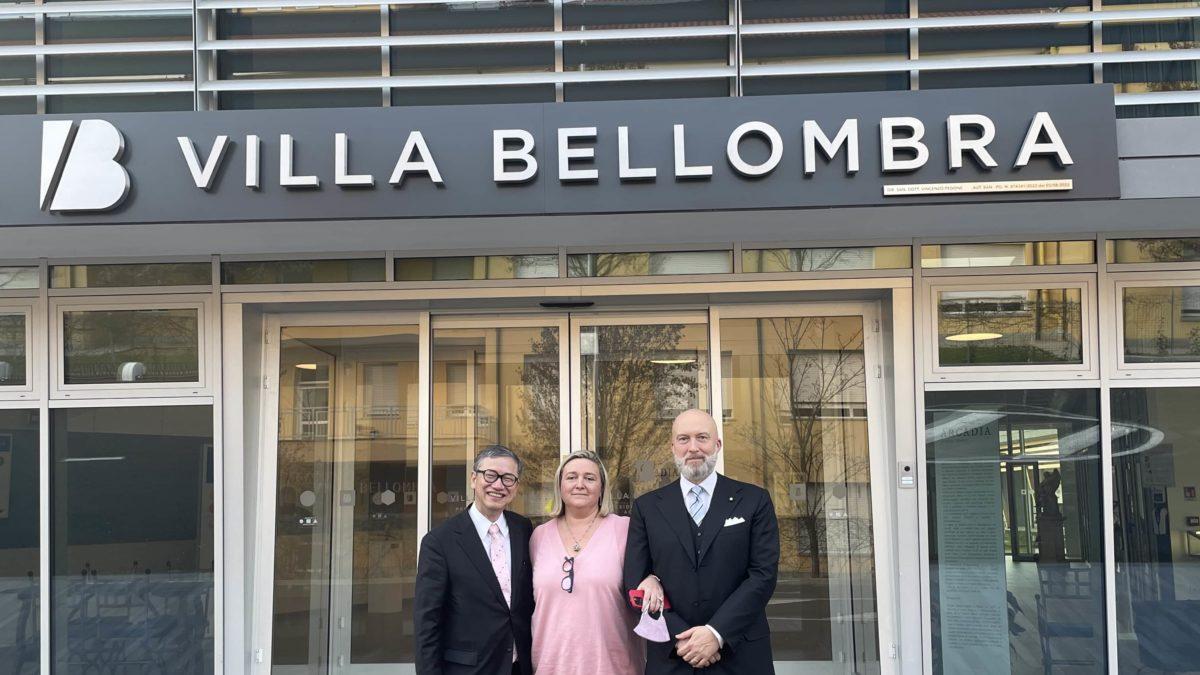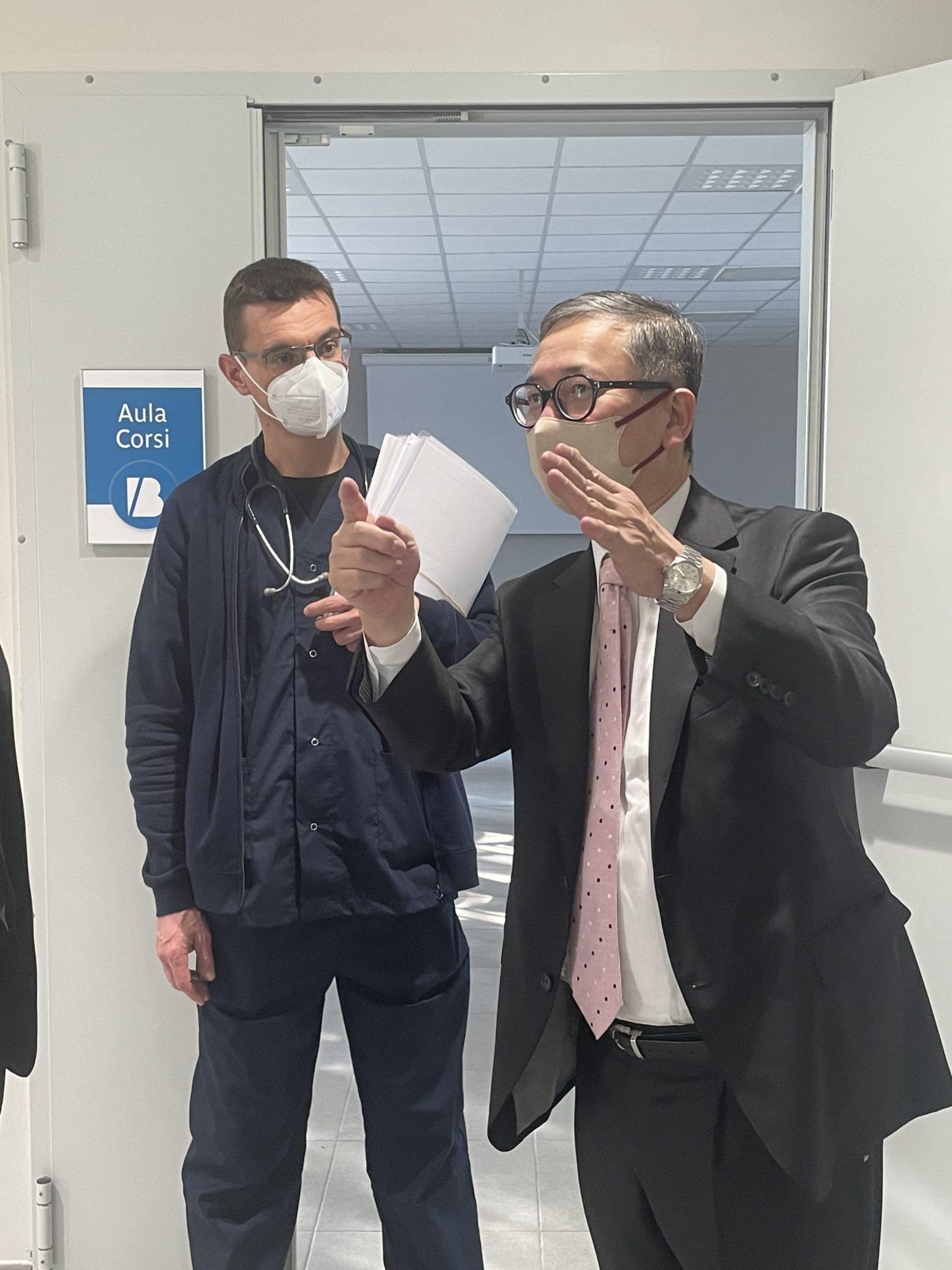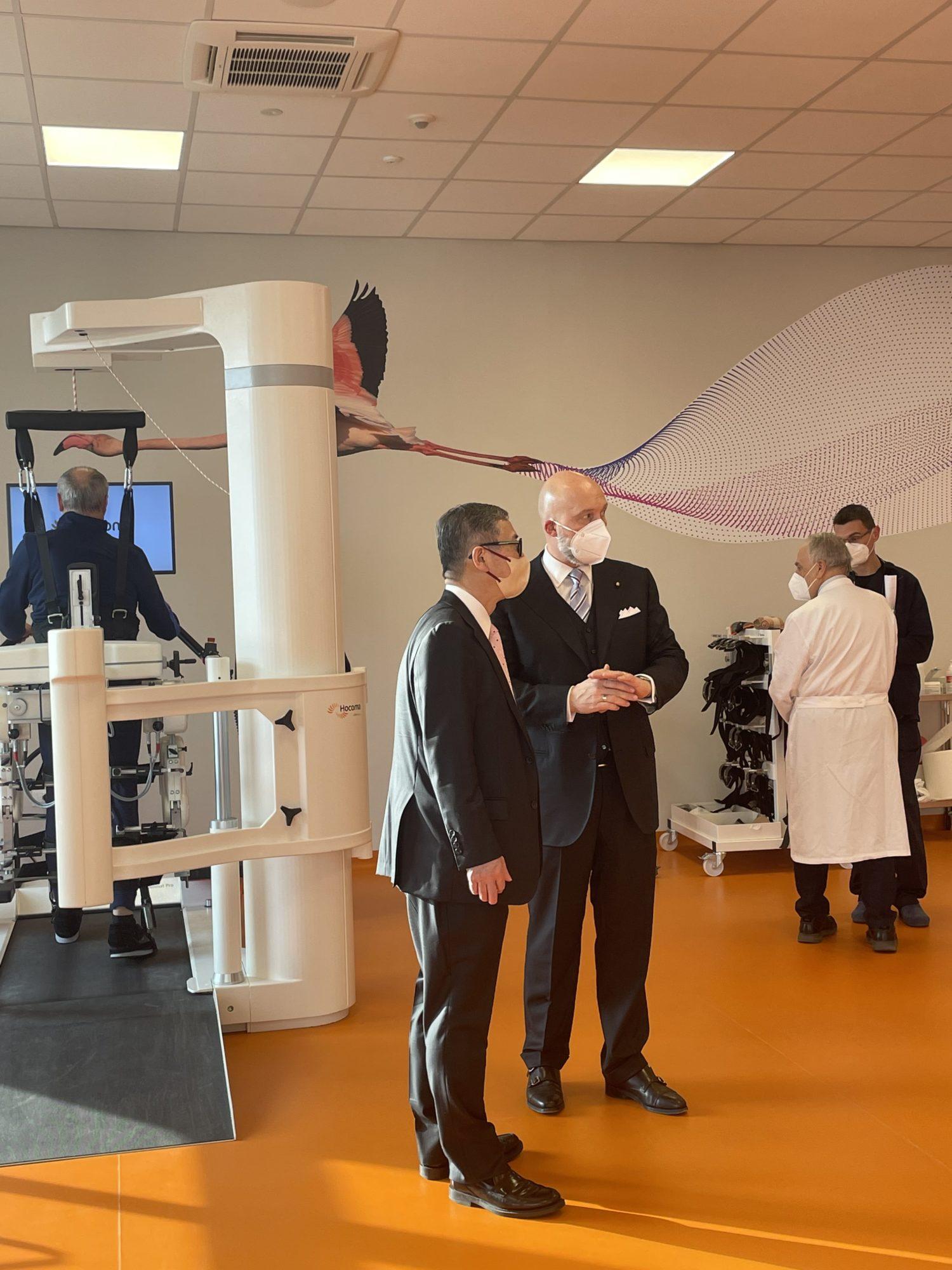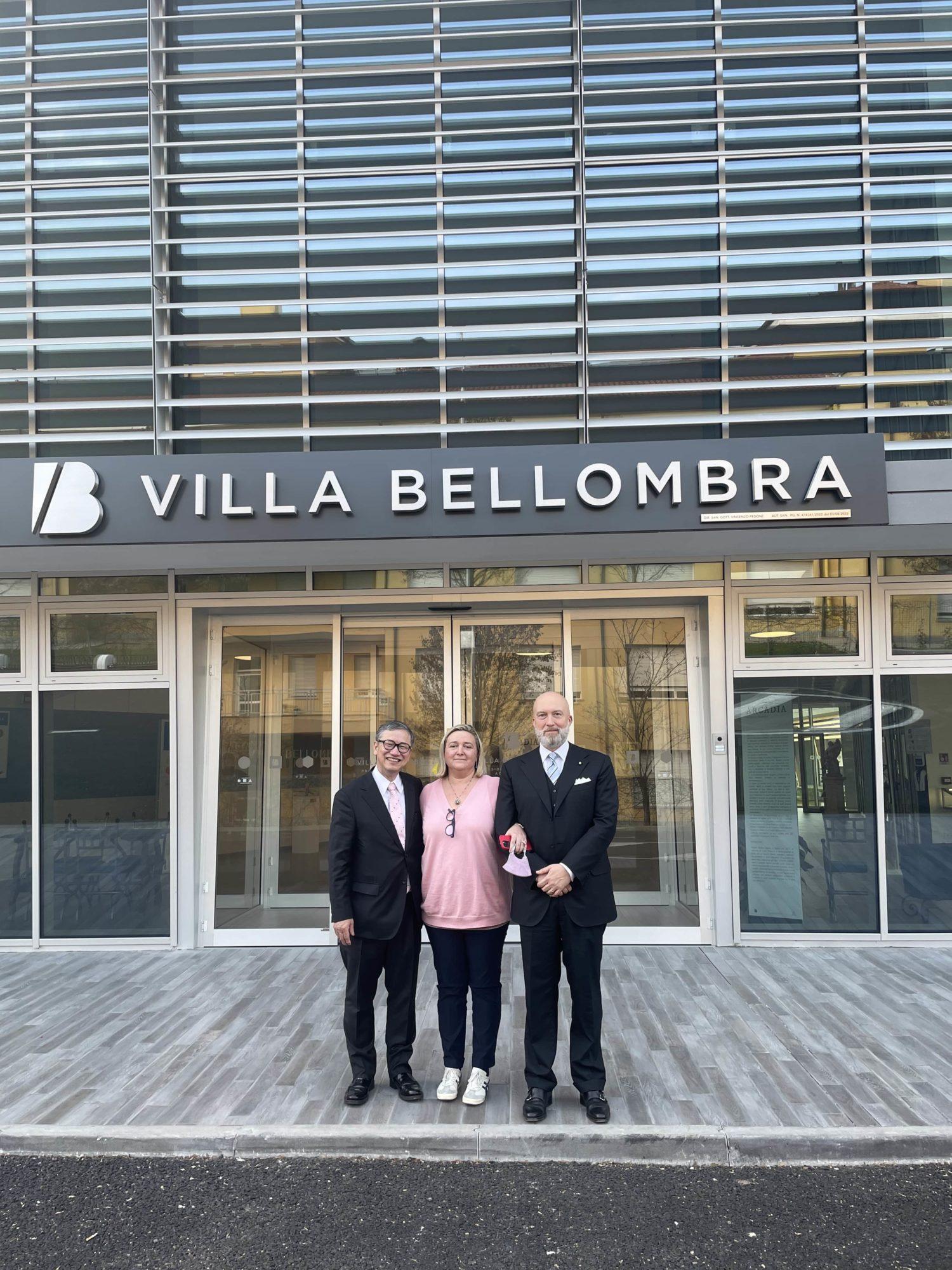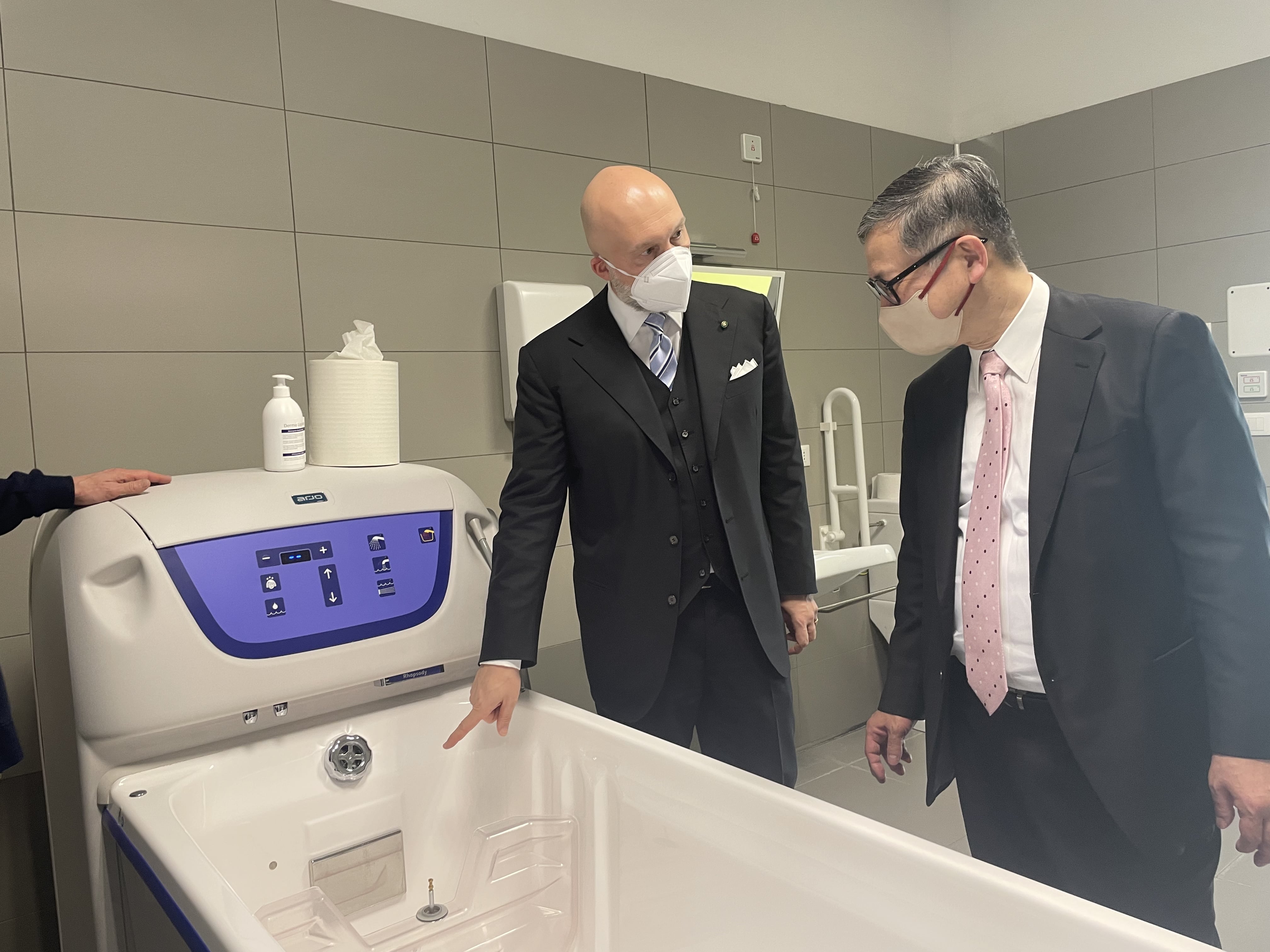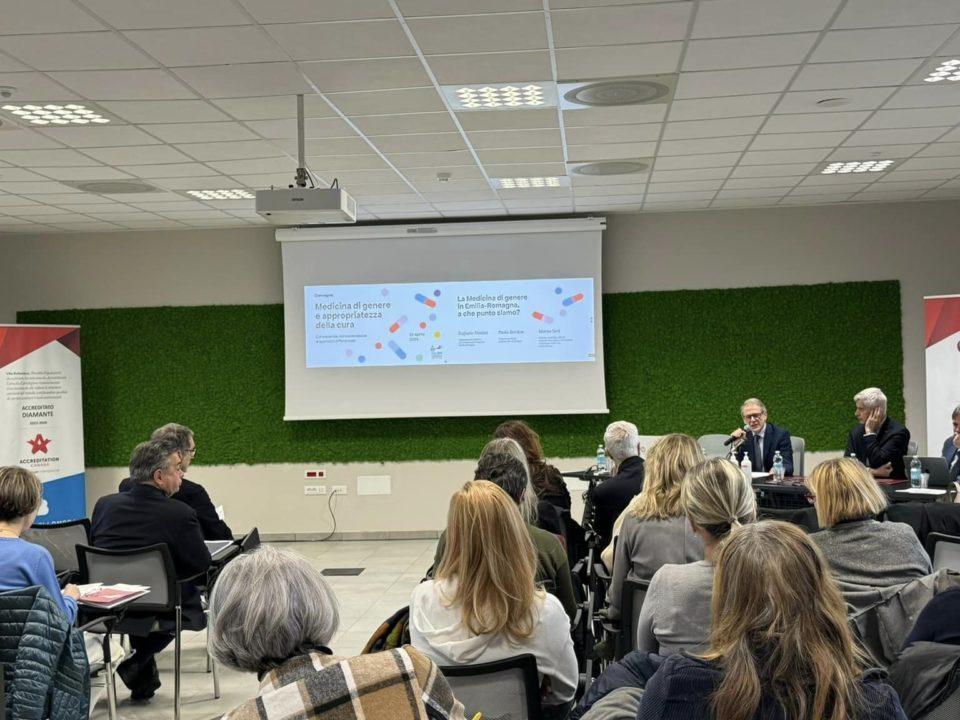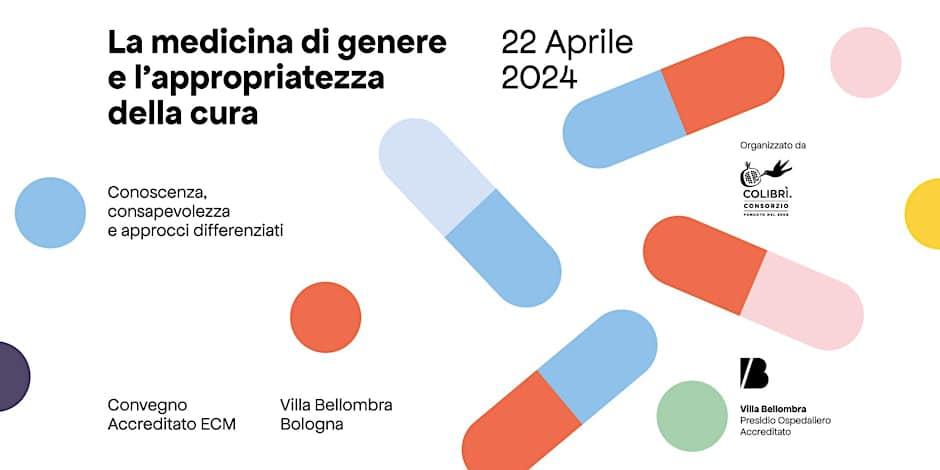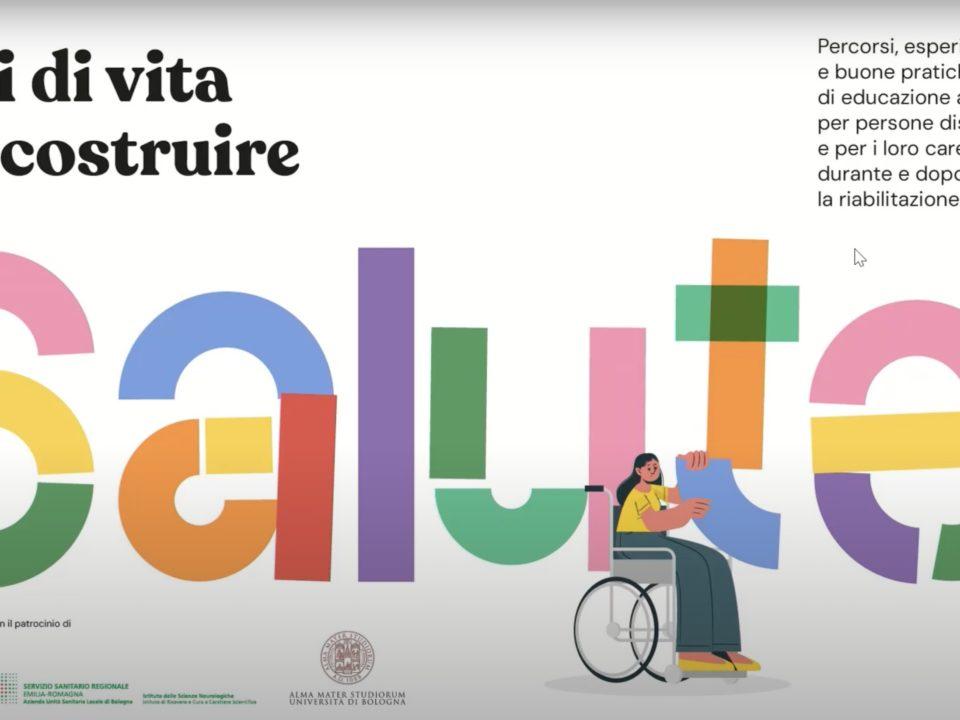
11° Bilancio Sociale AIOP Bologna
4 Novembre 2022
12° Bilancio Sociale AIOP Bologna: la presentazione il 12 ottobre
9 Ottobre 2023Il Consorzio Ospedaliero Colibrì e la Nuova Villa Bellombra aprono le porte al prof. Tomonori Hasegawa, docente alla Toho University ed esperto a livello internazionale nel campo della medicina e della salute.
Il professore e i referenti del Consorzio si erano conosciuti in occasione dello Study Tour realizzato in Giappone prima che scoppiasse la pandemia allo scopo di studiare le buone pratiche a livello ospedaliero e attuare uno scambio con l’esperienza italiana, nota in tutto il mondo per l’eccellenza delle cure.
Il docente universitario di origini giapponesi nei giorni scorsi ha fatto una breve tappa in Italia per conoscere e toccare con mano l’innovazione della Nuova Bellombra, ospedale specializzato in riabilitazione intensiva robotica per pazienti neurologici ed ortopedici, con sede a Casteldebole da settembre dello scorso anno.
Ad accogliere e guidare il prof. Hasegawa sono stati il presidente del Consorzio Colibrì Claudia Sabatini e l’amministratore delegato Averardo Orta insieme al direttore sanitario dott. Vincenzo Pedone e ad altri medici e specialisti della riabilitazione.
Approfittando della visita dell’illustre ospite, abbiamo raccolto dal prof. Hasegawa responsabile della qualità e specializzato nell’accreditamento in ambito ospedaliero, alcune riflessioni sull’evoluzione di un sistema di cura sempre più complesso.
“Per la medicina riabilitativa di alta qualità tre sono i fattori di cui tener conto – spiega il docente universitario – la questione del timing, ovvero delle tempistiche per agire, di vitale importanza nei casi di malattie acute e una volta che la condizione del paziente si è stabilizzata, la riabilitazione deve iniziare il prima possibile”
Il prof. Hasegawa ha apprezzato la Villa Bellombra per il design, l’architettura e l’innovazione tecnologica, notando come l’obiettivo, già dalla fase di progettazione dell’edificio fosse stato quello di creare ambienti inclusivi e accessibili per il paziente nel suo percorso riabilitativo.
Le attrezzature sono all’avanguardia e, insieme alle competenze del personale, concorrono a facilitare il percorso di riabilitazione del paziente. Questa struttura dimostra in Italia, così come in Giappone, c’è chi investe nell’innovazione. Anche l’arte, così come uno spazio interno all’ospedale – adibito alla convivialità con un bicchiere o un pasto da condividere – possono facilitare il percorso di recupero dei pazienti.
Che la struttura si sviluppi tutta su un unico livello non è un dettaglio di poco conto: infatti in Giappone gli edifici si sviluppano verticalmente rischiando di perdere minuti preziosi per il trasferimento dei pazienti da un piano all’altro. Avere a disposizione sullo stesso piano la palestra e tutti gli altri ambienti per la riabilitazione, come nel caso di Villa Bellombra, permette ai pazienti di spostarsi il meno possibile e di avere maggiore comfort.
Sul fronte dell’investimento privato, il professore sottolinea come in Giappone non sempre vengano promossi gli investimenti privati e non soltanto nel campo del sistema sanitario ma anche dei sistemi educativi e sociali. Apprezza che questa struttura così moderna e all’avanguardia nasca da un investimento privato e che sia a supporto della sanità pubblica.
Per quanto riguarda il futuro della riabilitazione, il prof. Hasegawa sostiene che tutto dipenderà anche da fattori sociali e demografici. In generale la domanda per gli interventi riabilitativi sta aumentando sempre più nella popolazione che invecchia in Italia come in Giappone.
Per concludere spazio alle foto per suggellare un pomeriggio all’insegna della salute e delle sfide per il futuro, in un confronto con un esperto internazionale della medicina sociale.
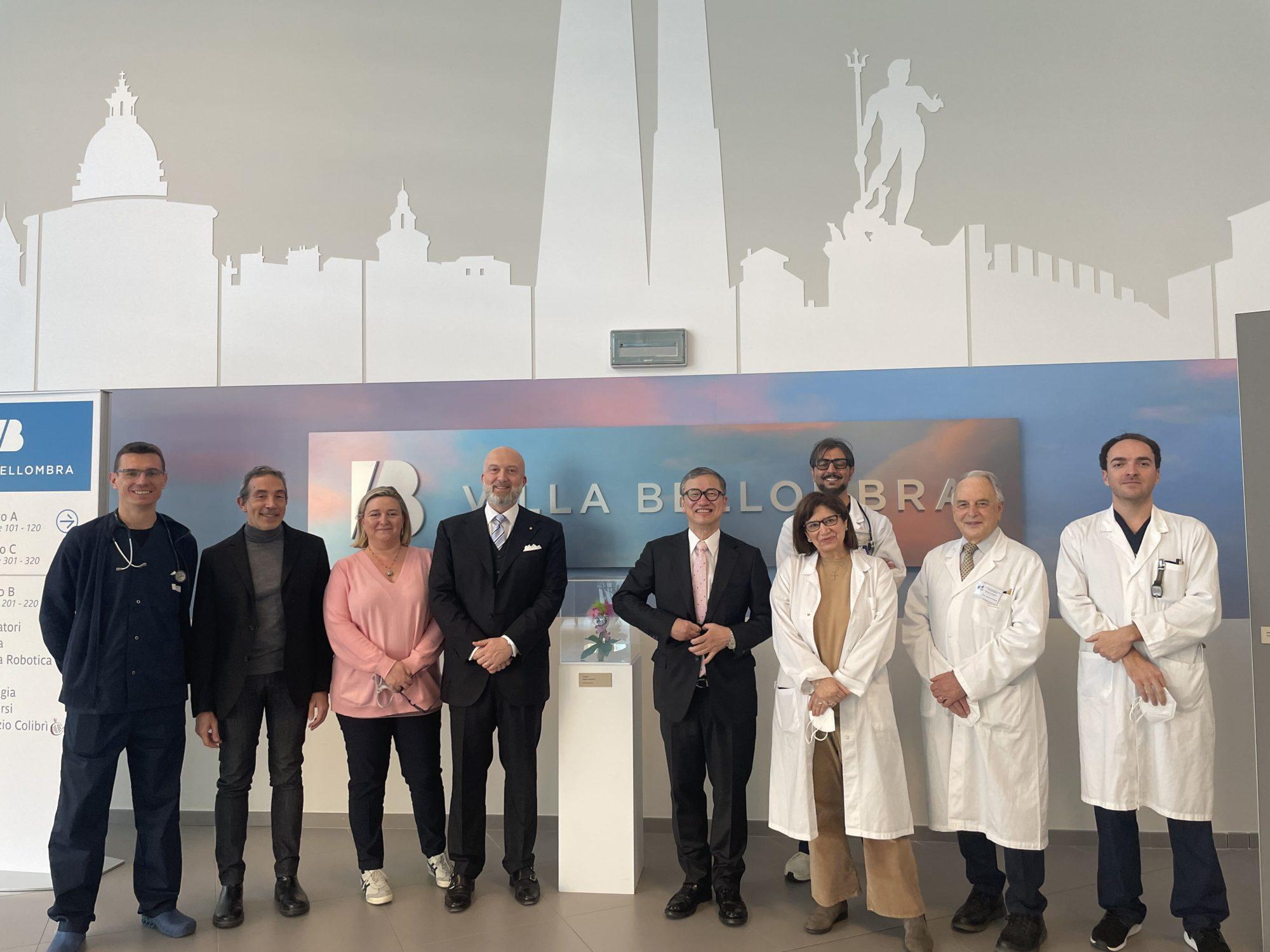
New villa bellombra welcomes prof. Tomonori Hasegawa
Consortium Colibrì and the new Villa Bellombra welcomes prof. Tomonori Hasegawa, professor at the Toho University and an international expert in the field of medicine and healthcare.
Prof. Tomonori Hasegawa and the representatives of Consortium Colibrì met during the Study Tour in Japan before the sudden outbreak of the pandemic in order to study best practices in the healthcare system and promote an exchange with the Italian experience, which is world widely known for its excellence in care.
Recently, the university professor of Japanese origins made a brief stop in Italy in order to visit and find out the innovation of Nuova Villa Bellombra, that is a hospital specialized in intensive robotic rehabilitation for neurological and orthopedic patients.
During the guided tour Prof. Hasegawa was accompanied by the President of Consortium Colibrì Ing. Claudia Sabatini and the Chief Executive Officer Dr. Averardo Orta with the participation of the Medical Director Dr. Vincenzo Pedone and other specialists in rehabilitation.
Taking advantage of the visit of this prestigious guest, we have collected some reflections from Prof. Hasegawa, quality manager and specialist in hospital accreditation, on the evolution of an increasingly complex healthcare system.
“For high quality rehabilitation medicine, there are three main factors to take into account – as the university professor explains – the question of timing, that is when to start, which has an essential importance in cases of acute illness, and once the condition stabilized rehabilitation should be started as soon as possible. The second important factor concerns intensive care. Last but not least, the third factor is the collaboration between all the specialists who take part in the treatment process. The balance between these three factors has changed through time, even in Italy”.
Professor Hasegawa appreciated Villa Bellombra for its design, architecture and technological innovation, drawing attention to the main goal, which has to create inclusive and accessible environments for the patient in his rehabilitation process.
The medical equipment is avant-garde and, coupled with the skills of all staff, and it helps to facilitate the patient’s rehabilitation process. This facility is a proof that in Italy, as well as in Japan, there are entrepreneurs who invest in innovation. Even art is aimed at creating a space inside the hospital designated for conviviality with a glass to drink or a meal to share with someone and it can encourage the recovery path of patients.
It is not a trivial detail that the facility develops entirely on a single floor: in Japan the hospitals are built on several floors, and it carries a risk of wasting precious time for the transfer of patients from one floor to another. The advantage of having the gym and all other rehabilitation areas available on the same floor, as in the case of Villa Bellombra, allows patients to move around as little as possible and to have greater comfort.
Regarding the private investment, the professor underlines how private investments are not always promoted in Japan, and it happens not only in the healthcare system field but also in the educational and social ones. He appreciates that this innovative and avant-garde facility is the result of a private investment and that it supports public healthcare system.
Regarding the future of rehabilitation, Prof. Hasegawa argues that everything will also depend on social and demographic factors. In general, the demand for rehabilitation cares is increasing more and more in the aging society such as Italy and Japan.

